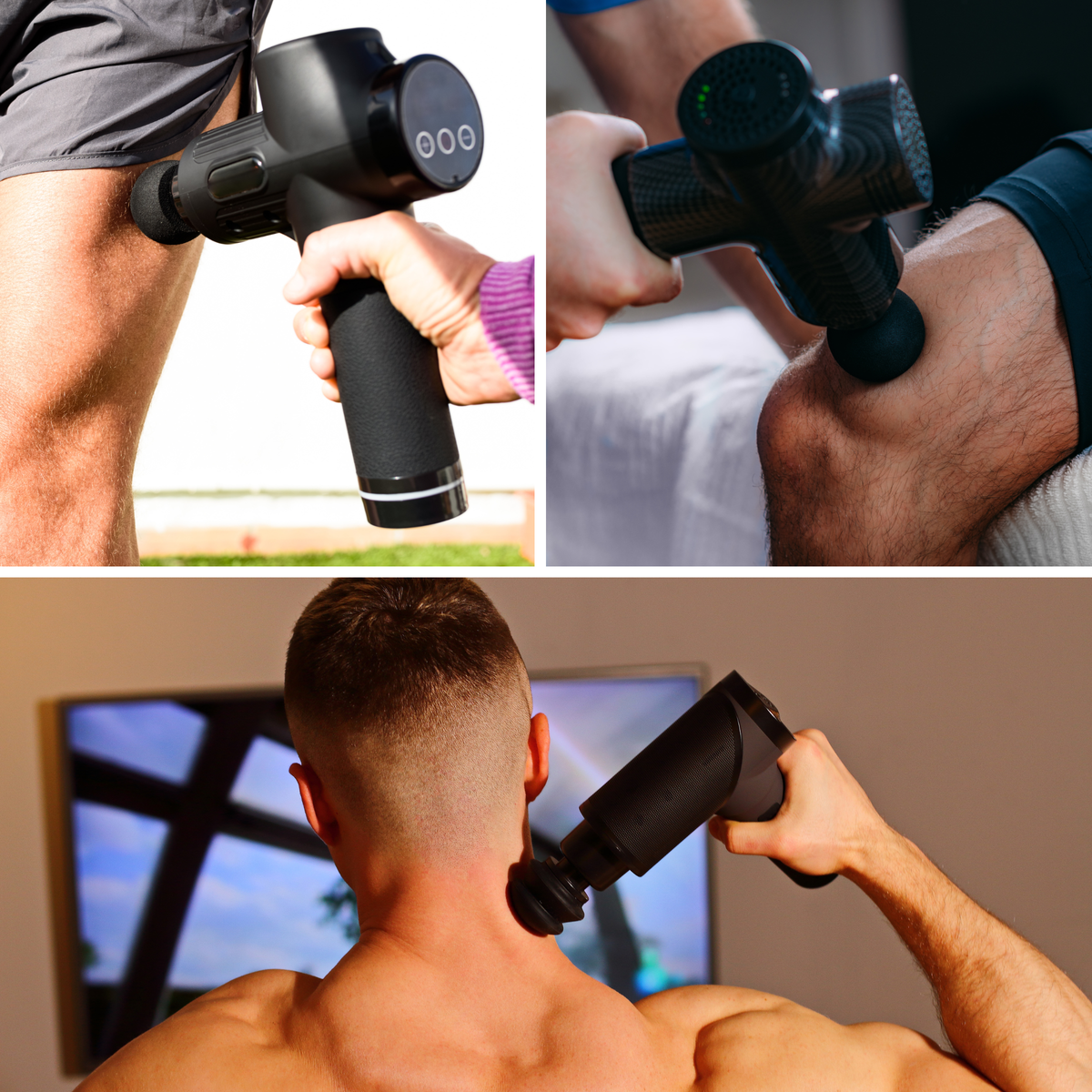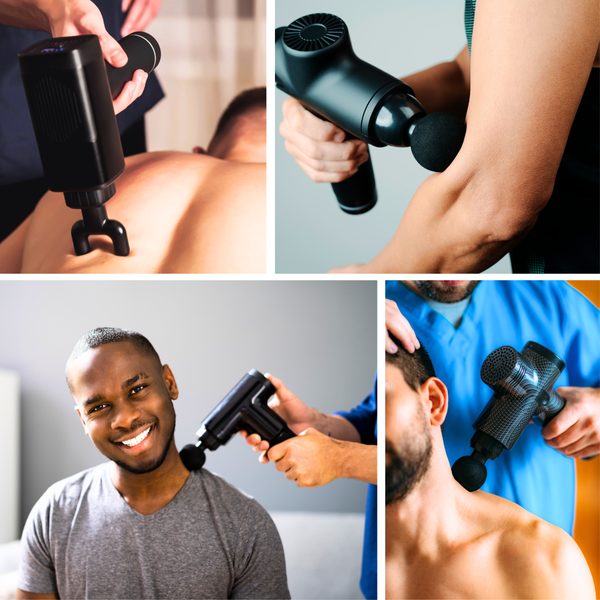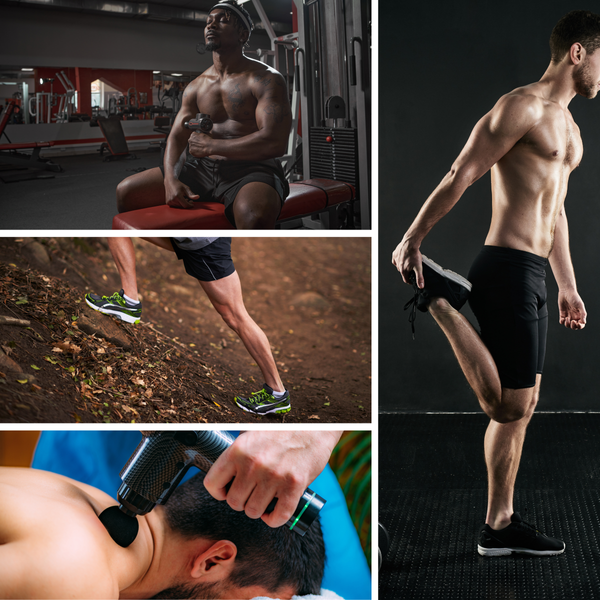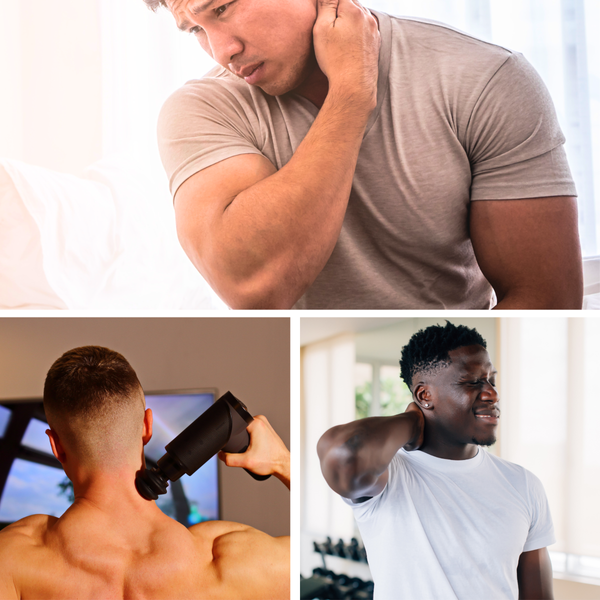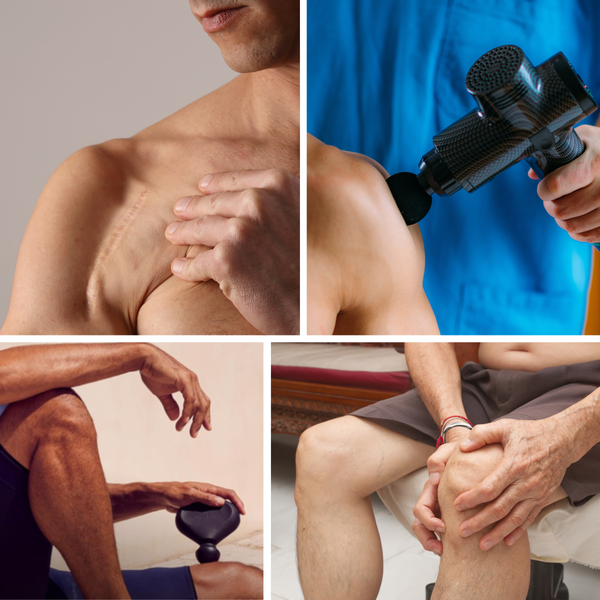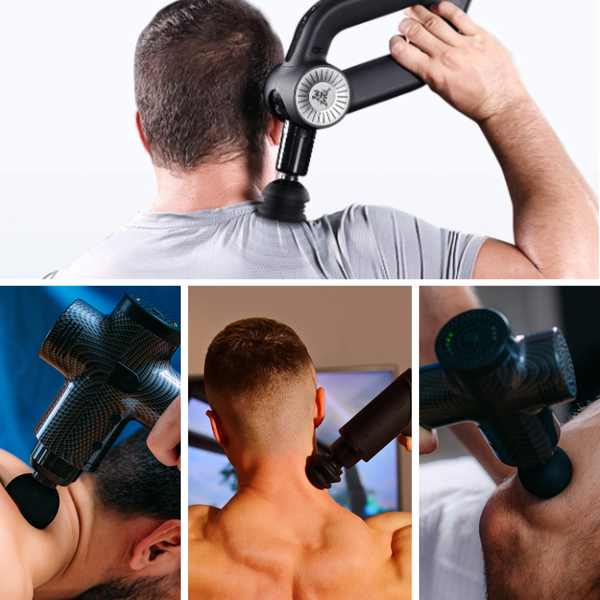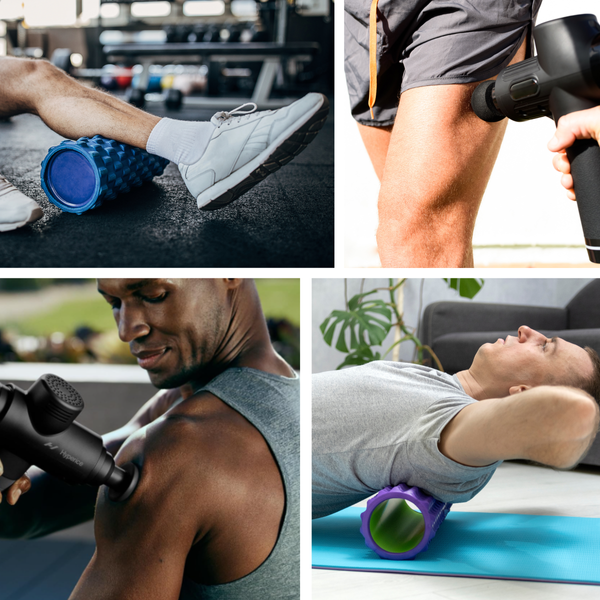Key Takeaways:
- Massage guns may offer benefits such as reduced muscle soreness, improved blood circulation, and quicker recovery times.
- Proper use is crucial to avoid injury and maximize the effectiveness of a massage gun.
- Consulting with a medical professional is recommended before using a massage gun, especially for individuals with certain medical conditions.
Massage guns have become a popular tool in the world of sports science and everyday fitness. But amidst the buzz, many are left wondering, "Is a massage gun actually helpful?" This article delves into the science behind massage guns, their potential benefits, and how to use them effectively.
Understanding Percussive Therapy
Percussive therapy, the principle behind most massage guns, is a form of massage that delivers rapid, concentrated pressure deep into muscle tissue. This method is designed to stimulate blood flow, reduce muscle tension, and promote recovery. Unlike traditional massage therapy, percussive treatment can be self-administered, providing a convenient option for ongoing muscle maintenance.

The Science of Muscle Recovery
Muscle recovery is a critical aspect of any fitness regimen. Following a heavy workout, muscles need to repair and strengthen. Increasing blood flow to these areas can help deliver the necessary nutrients and oxygen for recovery. Massage guns work by providing vibration therapy and deep tissue massage, which are believed to increase blood circulation and assist in the recovery process.
Potential Health Benefits
Massage guns are touted for their ability to relieve pain, reduce inflammation, and improve range of motion. By targeting specific muscle groups, they can help release tension and reduce the onset of muscle soreness (DOMS). Additionally, the increased tissue metabolism may aid in reducing scar tissue and promoting the healing of soft tissue.
Are Massage Guns Worth It?
For professional athletes and fitness enthusiasts, massage guns can be valuable recovery tools. They offer a quick and effective way to warm up muscles before exercise and help reduce muscle tightness post-exercise. However, it's essential to weigh the cost against the potential benefits and consider if a massage gun is a necessary addition to your recovery toolkit.

How to Use a Massage Gun Safely
Using a massage gun incorrectly can lead to discomfort or injury. It's important to avoid sensitive areas, bony areas, and to stop immediately if you experience pain. Start on a lower setting and gradually increase intensity as needed. Never apply too much pressure, as this can cause bruising and damage to the muscle tissue.
Customizing Your Massage Gun Experience
When it comes to using a percussion massage gun, personalization is key. A physical therapist can guide you on how to tailor the settings to your needs, ensuring you target sore muscles effectively without causing harm. By adjusting the speed and attachments, you can modify the intensity of the massage to either soothe discomfort or invigorate the muscles. It's like having a customizable self-massage at your fingertips, which can be particularly beneficial after a strenuous workout or a long day of physical labor.
Moreover, understanding how to add pressure appropriately is crucial. A common misconception is that more pressure equals a better massage, but this isn't always the case. Gentle pressure can stimulate blood vessels and increase blood flow, aiding in the removal of lactic acid and promoting faster recovery. On the other hand, too much pressure can lead to bruising or further muscle damage. It's about finding that sweet spot where the percussion gun provides relief and enhances recovery without overdoing it.
Enhancing Recovery with Complementary Practices
While a percussion massage gun can be a powerful tool for addressing onset muscle soreness (DOMS) and enhancing whole body recovery, it's even more effective when used in conjunction with other recovery methods. For instance, pairing the massage gun with a foam roller can provide a comprehensive approach to muscle relaxation and recovery. The foam roller can work on larger muscle groups and fascia, while the massage gun can target specific areas that require deeper attention.

Additionally, incorporating practices such as dynamic stretching, proper hydration, and balanced nutrition can further support muscle recovery and overall health. A board-certified physical therapist can offer guidance on how to integrate these practices into your routine effectively. By combining the targeted relief of a percussion massage gun with a holistic approach to wellness, you can optimize your recovery process and maintain peak physical performance.
When to Consult a Medical Professional
Before incorporating a massage gun into your routine, it's wise to consult with a medical professional, especially if you have chronic pain, are on blood thinners, or have any medical conditions that could be affected by percussive massage treatment. A board-certified therapist can provide guidance on how to use a massage gun directly for your specific needs.
Addressing Delayed Onset Muscle Soreness (DOMS)
Delayed onset muscle soreness can be a significant hurdle for many athletes. Massage guns may offer relief by reducing muscle soreness and improving blood circulation. By targeting the affected muscle groups, percussive therapy can help alleviate the discomfort associated with DOMS.
The Role of Massage Guns in Athletic Performance
Athletic performance can benefit from the use of massage guns. By helping to relieve pain, reduce muscle tension, and improve flexibility, these devices can be an integral part of an athlete's training and recovery regimen. Physical therapists often recommend them as a supplement to traditional treatments.

Comparing Massage Guns to Other Recovery Tools
Massage guns are often compared to foam rollers and other self-massage tools. While foam rollers are effective for large muscles and general tension, massage guns can target specific trigger points and provide a more intense, focused treatment. This makes them a versatile option for those looking to enhance their recovery practices.
Incorporating Massage Guns into Your Routine
To get the most out of a massage gun, it's important to incorporate it into your routine properly. Use it as part of your warm-up to prepare muscles for exercise and again post-workout to aid in muscle recovery. For ongoing maintenance, a regular schedule can help keep muscle pain at bay.
Precautions and Best Practices
While massage guns are generally safe, there are precautions to keep in mind. Avoid using the gun on any area that feels numb, and be cautious around calf muscles and other areas prone to cramping. Always read the manufacturer's instructions and follow best practices to ensure safe and effective use.

Summary
Massage guns have gained popularity for their potential to provide quick and effective muscle recovery, pain relief, and improved athletic performance. When used correctly, they can be a helpful addition to one's recovery arsenal. However, it's important to use a massage gun safely, understand its limitations, and consult with a medical professional if necessary. By doing so, individuals can enjoy the health benefits of percussive therapy without risking injury.
FAQ Section
Q: Can using a massage gun replace seeing a massage therapist?
A: While massage guns can provide similar benefits to a massage therapist, such as reducing muscle soreness and promoting recovery, they should not be seen as a complete replacement. A massage therapist can offer personalized treatment and address specific issues that a massage gun may not be able to.
Q: How often should I use a massage gun?
A: The frequency of use can vary depending on your needs and fitness level. Generally, it's safe to use a massage gun for a few minutes per muscle group, either as part of a warm-up or to aid in post-workout recovery. Listen to your body and adjust usage accordingly.
Q: Are there any risks associated with using a massage gun?
A: If used improperly, there are risks such as bruising, increased pain, or injury. It's important to avoid using a massage gun on injured areas, over bony prominences, or if you have certain medical conditions. Always start with a lower intensity and avoid pressing too hard.



